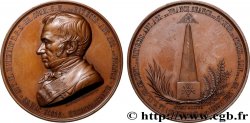Чтобы принять участие в торгах, вы должны войти в систему и стать подтвержденным участником аукциона. Войдите, чтобы сделать ставку. Ваш аккаунт будет подтвержден в течение 48 часов. Не ждите до закрытия торгов, чтобы зарегистрироваться.Сделав ставку на данный товар, вы вступаете в юридическое соглашение на покупку выбранного товара и нажатием кнопки «Сделать ставку» подтверждаете принятие вами условий интернет-аукционов cgb.fr.
Ставка может бить сделана только в полном эквиваленте евро. Торги закроются согласно времени, указанному в описании товара, все ставки, сделанные после закрытия торгов, учитываться не будут. Не следует откладывать предложение вашей ставки до последнего момента, так как система может не успеть обработать вашу заявку, и ваша ставка не будет принята. Более детальную информацию вы найдёте здесь: FAQ по интернет-аукционам.
БЕСПЛАТНО.
БЕСПЛАТНО.
| Оценить : | 150 € |
| Цена : | 35 € |
| Максимальная предлагаемая цена : | 35 € |
| Конец торгов : | 19 November 2018 18:46:30 |
| Участников : | 9 Участников |
Тип Médaille de l’exposition de Dijon
Дата: 1858
Монетный двор / Город: 21 - Dijon
Металл: copper
Диаметр: 56,5 mm
Ориентация осей монеты: 12 h.
Гравер CHABAUD Louis-Félix (1824-1902)
Вес: 98 g.
Век: lisse + main CUIVRE
Комментарии о состоянии
Médaille avec un superbe avers et quelques traces de manipulation au revers. Très agréable patine brune
Лицевая сторона
Аверс: легенда: NAPOLÉON III EMPEREUR.
Аверс: описание: Tête nue de Napoléon III à gauche.
Обратная сторона
Реверс: легенда: INDUSTRIE BEAU-ARTS AGRICULTURE * 1858 * // EXPOSITION / DE DIJON / MÉDAILLE DE 3E CLASSE / À / BOUTARDS & LASSALLE.
Реверс: Описание: Légende circulaire puis en 5 lignes horizontales.
Комментарий
Médaille attribuée à boutards & lassalle.
Louis-Félix Chabaud, né le 14 mars 1824 à Venelles (Bouches-du-Rhône), où il est mort le 25 avril 1902, est un sculpteur et médailleur français. Fils d’agriculteur, Louis-Félix Chabaud fréquente l’école communale de Venelles jusqu’en 1836 et entre en apprentissage chez un boulanger, puis chez un marbrier aixois, M. Raimond. Il commence ses études à l’école des beaux-arts d’Aix-en-Provence avec Joseph Marius Ramus et les termine à l'École des beaux-arts de Paris sous la direction de James Pradier. Le 9 septembre 1848 il remporte le 1er grand prix de Rome en gravure de médailles et pierres fines pour son Mercure formant le caducée. Il séjourne à Rome pendant quatre ans, pensionnaire de l’État à la villa Médicis.
De retour à Paris, il expose au Salon de 1853 et obtient le 3e prix pour L’Agriculture (bronze) et Cérès embrassant Triptolème. En 1855 il est également primé pour une série de médailles : Agriculture, Napoléon III et une tête de femme. En 1857, il est à nouveau primé pour une sculpture en plâtre représentant La Chasse, acquise par l’État français. En 1859, douze camées en pierres fines lui valent le prix de la gravure et il reçoit, en 1863, une 3e médaille pour une statue de L’Agriculture et un bas-relief intitulé L'Abolition de l’esclavage.
Réputé comme sculpteur ornemaniste, il participe au chantier de décoration du Palais Garnier à Paris.
L’Exposition internationale de 1858 s'est déroulée dans la ville française de Dijon (Côte-d'Or) afin de promouvoir les Beaux-arts, l'industrie et l'agriculture. L'Exposition a été inaugurée le 8 juin 1858 par Jean-Baptiste Philibert Vaillant et s'est tenue jusqu'à septembre 1858 place d'Armes (actuelle place de la Libération) au cœur de la capitale des ducs de Bourgogne à l'initiative du maire de la ville Théodore Michel Vernier, président de la commission. Elle devait promouvoir les Beaux-arts, l'industrie et l'agriculture et a ainsi exposé objets et produits dans les salles de l'ancien palais des Ducs de Bourgogne et dans les annexes de la La place d'Armes, de la place du Théâtre et de la place des Ducs. Une valse pour piano La Dijonnaise a été spécialement écrite pour l'événement par madame Alexandre Bataille et dédiée aux membres de la commission de l'exposition..
Medal awarded to boutards & lassalle.
Louis-Félix Chabaud, born March 14, 1824 in Venelles (Bouches-du-Rhône), where he died April 25, 1902, is a French sculptor and medalist. The son of a farmer, Louis-Félix Chabaud attended the municipal school in Venelles until 1836 and began an apprenticeship with a baker, then with a marble worker from Aix, M. Raymond. He began his studies at the Aix-en-Provence School of Fine Arts with Joseph Marius Ramus and completed them at the Paris School of Fine Arts under the direction of James Pradier.. On September 9, 1848, he won the 1st Grand Prix de Rome in engraving medals and fine stones for his Mercury forming the caduceus.. He stayed in Rome for four years, as a state pensioner at the Villa Medici..
Back in Paris, he exhibited at the Salon of 1853 and won third prize for Agriculture (bronze) and Ceres Embracing Triptolemus.. In 1855 he was also awarded a series of medals: Agriculture, Napoleon III and a woman's head. In 1857, he was awarded again for a plaster sculpture representing The Hunt, acquired by the French State. In 1859, twelve cameos in fine stones earned him the engraving prize and in 1863 he received a 3rd medal for a statue of Agriculture and a bas-relief entitled The Abolition of Slavery.
Renowned as an ornamental sculptor, he participated in the decoration project of the Palais Garnier in Paris.
The International Exhibition of 1858 was held in the French city of Dijon (Côte-d'Or) to promote fine arts, industry and agriculture.. The Exhibition was inaugurated on June 8, 1858 by Jean-Baptiste Philibert Vaillant and was held until September 1858 at Place d'Armes (now Place de la Libération) in the heart of the capital of the Dukes of Burgundy at the initiative of the city's mayor, Théodore Michel Vernier, president of the commission.. It was intended to promote the Fine Arts, industry and agriculture and thus exhibited objects and products in the rooms of the former palace of the Dukes of Burgundy and in the annexes of the Place d'Armes, the Place du Théâtre and the Place des Ducs.. A piano waltz, La Dijonnaise, was specially written for the event by Mrs. Alexandre Bataille and dedicated to the members of the exhibition commission..
Louis-Félix Chabaud, né le 14 mars 1824 à Venelles (Bouches-du-Rhône), où il est mort le 25 avril 1902, est un sculpteur et médailleur français. Fils d’agriculteur, Louis-Félix Chabaud fréquente l’école communale de Venelles jusqu’en 1836 et entre en apprentissage chez un boulanger, puis chez un marbrier aixois, M. Raimond. Il commence ses études à l’école des beaux-arts d’Aix-en-Provence avec Joseph Marius Ramus et les termine à l'École des beaux-arts de Paris sous la direction de James Pradier. Le 9 septembre 1848 il remporte le 1er grand prix de Rome en gravure de médailles et pierres fines pour son Mercure formant le caducée. Il séjourne à Rome pendant quatre ans, pensionnaire de l’État à la villa Médicis.
De retour à Paris, il expose au Salon de 1853 et obtient le 3e prix pour L’Agriculture (bronze) et Cérès embrassant Triptolème. En 1855 il est également primé pour une série de médailles : Agriculture, Napoléon III et une tête de femme. En 1857, il est à nouveau primé pour une sculpture en plâtre représentant La Chasse, acquise par l’État français. En 1859, douze camées en pierres fines lui valent le prix de la gravure et il reçoit, en 1863, une 3e médaille pour une statue de L’Agriculture et un bas-relief intitulé L'Abolition de l’esclavage.
Réputé comme sculpteur ornemaniste, il participe au chantier de décoration du Palais Garnier à Paris.
L’Exposition internationale de 1858 s'est déroulée dans la ville française de Dijon (Côte-d'Or) afin de promouvoir les Beaux-arts, l'industrie et l'agriculture. L'Exposition a été inaugurée le 8 juin 1858 par Jean-Baptiste Philibert Vaillant et s'est tenue jusqu'à septembre 1858 place d'Armes (actuelle place de la Libération) au cœur de la capitale des ducs de Bourgogne à l'initiative du maire de la ville Théodore Michel Vernier, président de la commission. Elle devait promouvoir les Beaux-arts, l'industrie et l'agriculture et a ainsi exposé objets et produits dans les salles de l'ancien palais des Ducs de Bourgogne et dans les annexes de la La place d'Armes, de la place du Théâtre et de la place des Ducs. Une valse pour piano La Dijonnaise a été spécialement écrite pour l'événement par madame Alexandre Bataille et dédiée aux membres de la commission de l'exposition..
Medal awarded to boutards & lassalle.
Louis-Félix Chabaud, born March 14, 1824 in Venelles (Bouches-du-Rhône), where he died April 25, 1902, is a French sculptor and medalist. The son of a farmer, Louis-Félix Chabaud attended the municipal school in Venelles until 1836 and began an apprenticeship with a baker, then with a marble worker from Aix, M. Raymond. He began his studies at the Aix-en-Provence School of Fine Arts with Joseph Marius Ramus and completed them at the Paris School of Fine Arts under the direction of James Pradier.. On September 9, 1848, he won the 1st Grand Prix de Rome in engraving medals and fine stones for his Mercury forming the caduceus.. He stayed in Rome for four years, as a state pensioner at the Villa Medici..
Back in Paris, he exhibited at the Salon of 1853 and won third prize for Agriculture (bronze) and Ceres Embracing Triptolemus.. In 1855 he was also awarded a series of medals: Agriculture, Napoleon III and a woman's head. In 1857, he was awarded again for a plaster sculpture representing The Hunt, acquired by the French State. In 1859, twelve cameos in fine stones earned him the engraving prize and in 1863 he received a 3rd medal for a statue of Agriculture and a bas-relief entitled The Abolition of Slavery.
Renowned as an ornamental sculptor, he participated in the decoration project of the Palais Garnier in Paris.
The International Exhibition of 1858 was held in the French city of Dijon (Côte-d'Or) to promote fine arts, industry and agriculture.. The Exhibition was inaugurated on June 8, 1858 by Jean-Baptiste Philibert Vaillant and was held until September 1858 at Place d'Armes (now Place de la Libération) in the heart of the capital of the Dukes of Burgundy at the initiative of the city's mayor, Théodore Michel Vernier, president of the commission.. It was intended to promote the Fine Arts, industry and agriculture and thus exhibited objects and products in the rooms of the former palace of the Dukes of Burgundy and in the annexes of the Place d'Armes, the Place du Théâtre and the Place des Ducs.. A piano waltz, La Dijonnaise, was specially written for the event by Mrs. Alexandre Bataille and dedicated to the members of the exhibition commission..








 Cообщить об ошибке
Cообщить об ошибке Распечатать страницу
Распечатать страницу Отправить мой выбор
Отправить мой выбор Задать вопрос
Задать вопрос Consign / sell
Consign / sell
 Информация
Информация















